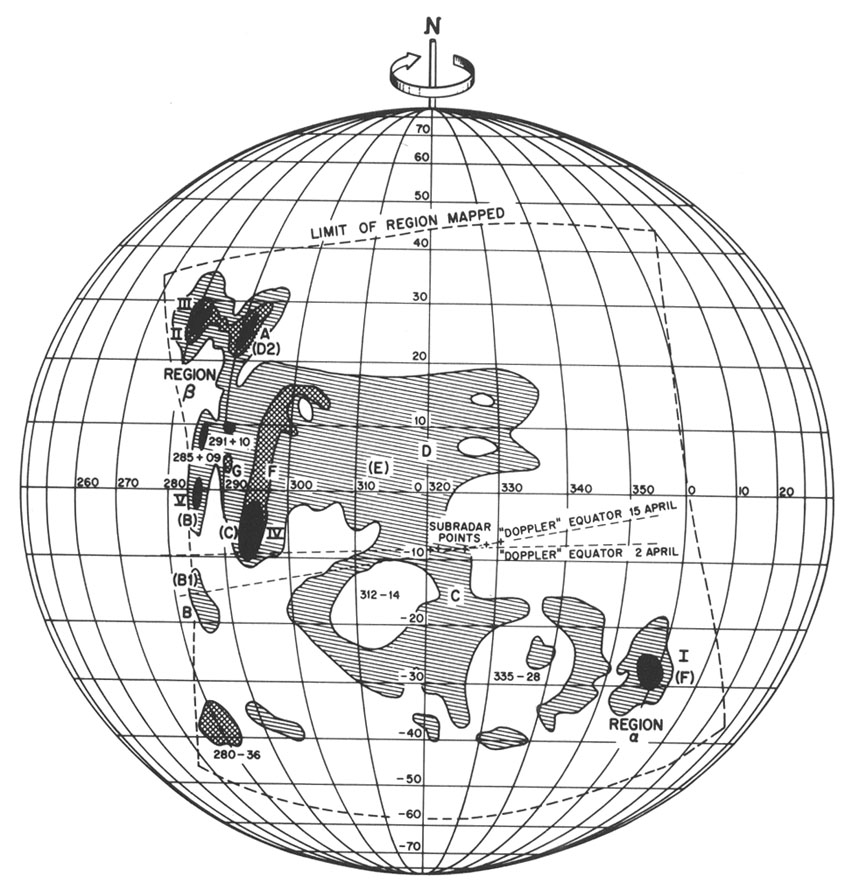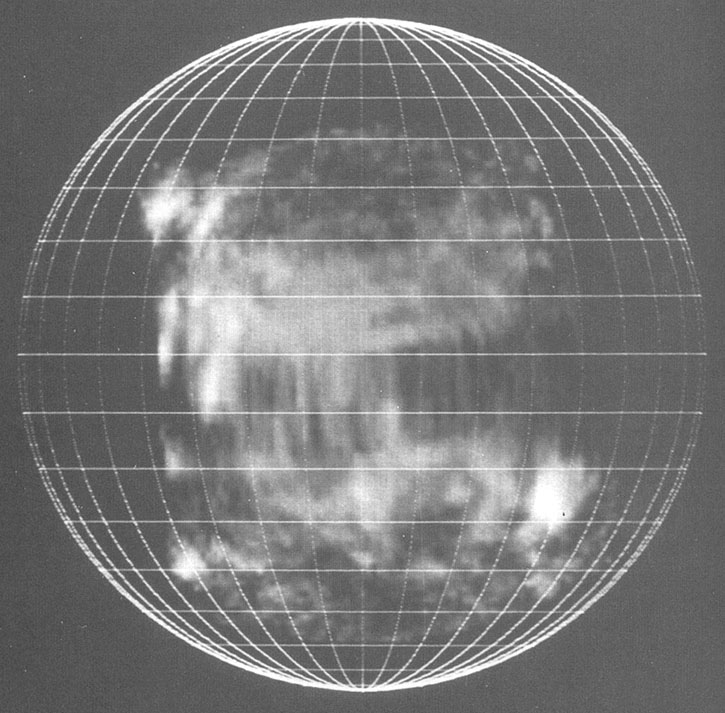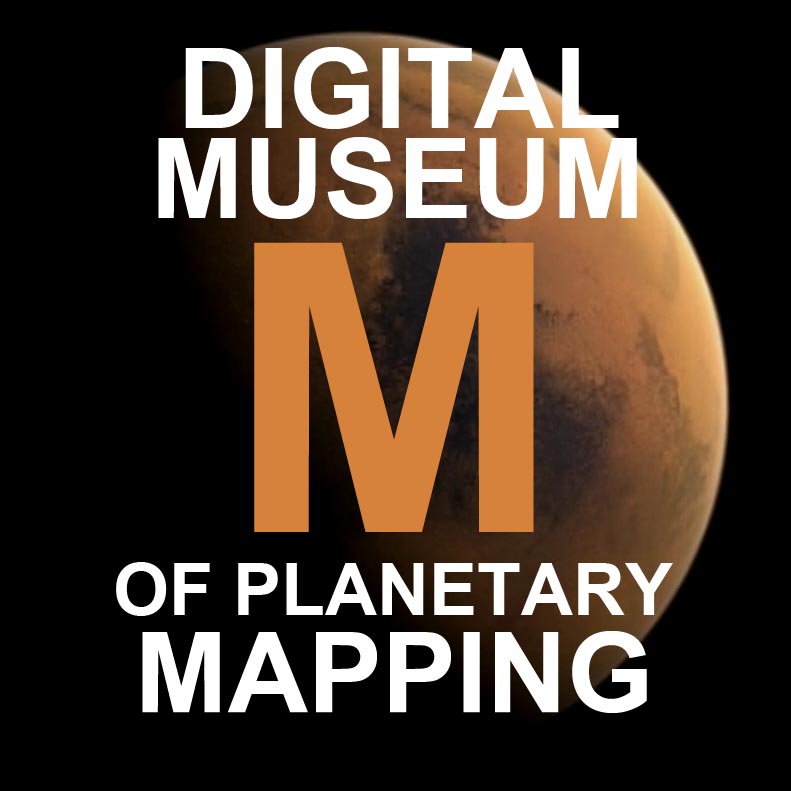The first radar map of Venus

“Diagram of Venus surface features made with the Haystack-Westford interferometer. Features observed with the Haystack-Westford interferometer are indicated variously by capital letters, Roman numerals, and coordinate numbers. Goldstein’s Alpha and Beta regions are indicated (Region ![]() and Region
and Region ![]() ), while the labels given by Carpenter are shown in parentheses. (Courtesy of Alan E. E. Rogers.)” (source: https://history.nasa.gov/SP-4218/ch5.htm)
), while the labels given by Carpenter are shown in parentheses. (Courtesy of Alan E. E. Rogers.)” (source: https://history.nasa.gov/SP-4218/ch5.htm)

One of the first range-Doppler image of Venus made with a radar interferometer, the Haystack and Westford antennas in tandem, in 1967. Not only are the Alpha and Beta regions discernible, but the complexity of Beta is revealed. (Courtesy of Alan E. E. Rogers.)
“
Alan Rogers and Dick Ingalls also studied Venus during the 1967 inferior conjunction with the Hayford interferometer and identified eight surface regions. Just as each previous radar astronomer had invented his own nomenclature, they labeled features with Roman numerals and letters. The features of which they were certain became Haystack I through Haystack IV. The probable regions were Haystack A through Haystack D. Five of these eight regions corresponded to features already observed by either Goldstein or Carpenter. Haystack I appeared to be Goldstein’s ![]() and Carpenter’s F, while Haystack II matched Goldstein’s
and Carpenter’s F, while Haystack II matched Goldstein’s ![]() (Table 2). Jurgens’ Arecibo results had not yet been published.67
(Table 2). Jurgens’ Arecibo results had not yet been published.67
Alan Rogers and Dick Ingalls then published a map of Venus showing the correlation of Haystack and JPL features in a 1969 issue of Science.68 The ![]() region now appeared to be large and complex. The Hayford radar interferometer confirmed and extended the observations of Goldstein and Carpenter. With interferometer data taken during the 1969 and 1972 conjunctions using an instrument with a lower system noise temperature, Alan Rogers and Dick Ingalls refined their map of Venus; the data continued to indicate agreement among the Haystack and JPL features.69“
region now appeared to be large and complex. The Hayford radar interferometer confirmed and extended the observations of Goldstein and Carpenter. With interferometer data taken during the 1969 and 1972 conjunctions using an instrument with a lower system noise temperature, Alan Rogers and Dick Ingalls refined their map of Venus; the data continued to indicate agreement among the Haystack and JPL features.69“
Published in: Rogers, A. E. E., & Ingalls, R. P. (1969). Venus: Mapping the Surface Reflectivity by Radar Interferometry. Science, 165(3895), 797–799. doi:10.1126/science.165.3895.79

